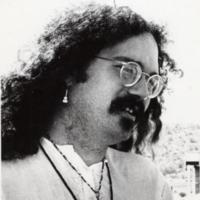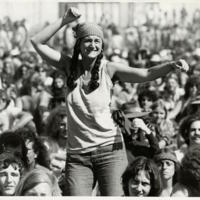The New Left
"Our program of rock and roll, dope, and f****** in the streets is a program of total freedom for everyone. And we are totally committed to carrying out our program. We breathe revolution. We are LSD-driven total maniacs in the universe. We will do anything we can to drive people crazy out of their heads and into their bodies."
- John Sinclair, Minister of Information, White Panther Party1
Radicalism found a distinct place in the progressive college town atmosphere of Ann Arbor. Leftist groups — such as the VOICE political party that would become the national movement known as Students for a Democratic Society — were prominent on campus and in the surrounding areas. Many of these efforts were focused on anti-war or anti-capitalist ideals, but in some cases they left behind the most marginalized groups of the time.
Many organizations like Students for a Democratic Society were more concerned with what they felt was a corrupt system controlling the University than the issues faced by women and people of color on a daily basis. Carl Davidson, who was a leader of SDS, posited that these issues were not worth organizing around because issues like women's hours affected so few at the University and in the case of housing discrimination, "most black college students are too bourgegois to care."2
Women were left out of much of the radical leftist discourse in Ann Arbor during this time. They formed their own advocacy groups to address the issues that they faced.
For a more in-depth archival look at the history of activism at the University of Michigan, check out this past Michigan in the World Exhibit.
1. John Sinclair, "White Panther Statement," J. Edgar Edwards Papers 1938-1973, Bentley Historical Library, University of Michigan.
2. Carl Davidson, "Toward a Student Syndicalist Movement or University Reform Revisited," J. Edgar Edwards Papers 1938-1973, Bentley Historical Library, University of Michigan.



